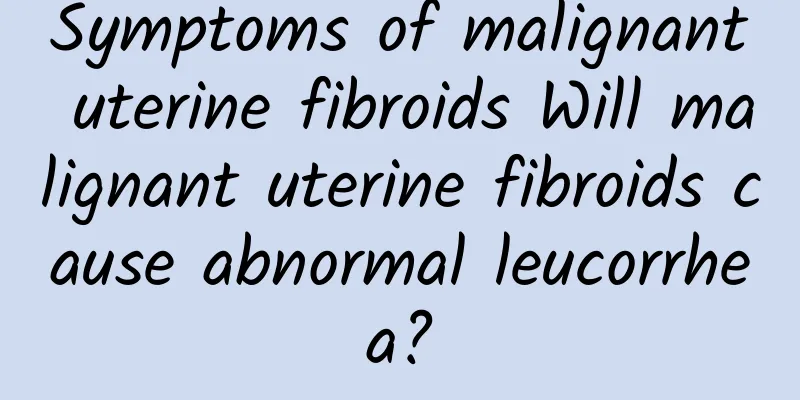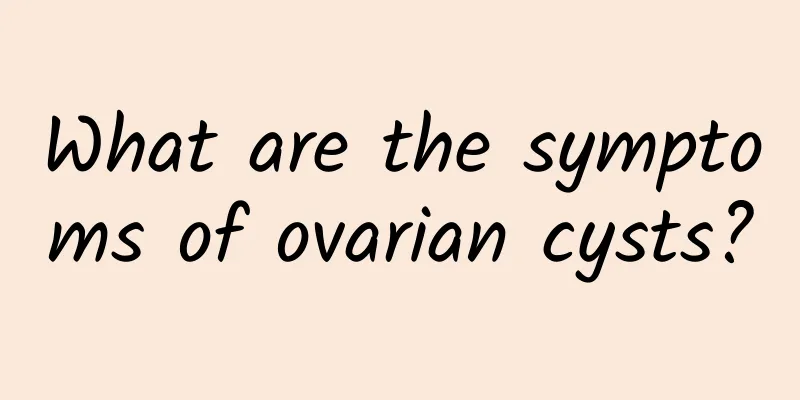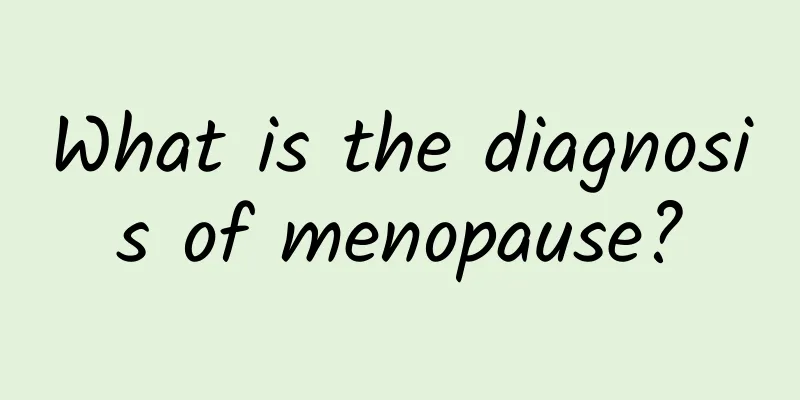Symptoms of malignant uterine fibroids Will malignant uterine fibroids cause abnormal leucorrhea?

|
Uterine fibroids are a common gynecological disease in women. Uterine fibroids are also divided into benign and malignant. Malignant uterine fibroids are usually caused by untimely treatment of uterine fibroids. I have introduced the clinical manifestations of uterine fibroids before, so today I will introduce the manifestations of malignant uterine fibroids? Let's see the difference between the two. Symptoms of malignant uterine fibroids: 1. Uterine bleeding is a symptom of malignant uterine fibroids, occurring in half or more of the patients. Among them, cyclical bleeding (excessive menstruation, prolonged menstruation or shortened menstrual cycle) accounts for about 2/3; non-cyclical (continuous or irregular) bleeding accounts for 1/3. Abdominal mass. Abdominal mass is usually the main complaint of patients with malignant uterine fibroids, up to 69.6%. Sometimes it may be the only symptom of fibroids. This often occurs in intramural fibroids that do not affect the endometrium, especially in the uterine fundus or under the pedunculated serosa. 2. Pain is a symptom of malignant uterine fibroids. Abdominal pain accounts for about 40%, backache 25%, and dysmenorrhea 45%. There is also lower abdominal swelling or back pain, but the degree is not very serious. The pain is caused by tumor compression of pelvic blood vessels, blood stasis, nerve compression or submucosal fibroids, which can stimulate uterine contraction, and the cervical canal is discharged from the inside and outside of the uterine cavity and becomes wide and painful; or fibroid necrosis infection causes pelvic inflammatory disease, adhesion, traction, etc. 3. Leucorrhea. Increased leucorrhea accounts for 411. .9%. Enlarged uterine cavity, increased endometrial glands, pelvic congestion or inflammation can increase leucorrhea; when submucosal fibroids ulcerate, infect, bleed, or necrotize, a large amount of bloody or purulent leucorrhea will be produced. Compression symptoms. Mainly occurs in cervical fibroids, or subuterine fibroids enlarge, fill the pelvic cavity, and compress surrounding organs. Compression of the bladder, frequent urination or dysuria, urinary retention, etc.; compression of the ureter can cause hydronephrosis and pyelonephritis. Fibroids growing on the posterior wall of the uterus can compress the rectum, causing constipation and even difficulty in defecation. 4. Infertility and miscarriage are symptoms of malignant uterine fibroids. 30% of patients with uterine fibroids are infertile. Infertility may be the cause of treatment, and uterine fibroids are found during examination. There are many reasons for infertility due to uterine fibroids, such as uterine fibroids and pregnancy knots. 5. Anemia. Anemia can occur in patients with long-term bleeding but not treated in time. Before liberation, most working women were in urgent need of life, and although uterine bleeding lasted for a long time, they could not be treated, leading to anemia. In the early days of liberation, data on patients with uterine fibroids: 45% of patients had hemoglobin of 5 to 10 grams, 25% had hemoglobin below 5 grams, and 12% and 4% had submucosal fibroids. Severe anemia (below 5 grams) can lead to anemic heart disease and myocardial degenerative changes. Hypertension. Some patients with malignant uterine fibroids are accompanied by hypertension. According to statistics, most hypertensive patients (except those with a history of hypertension) returned to normal after the removal of fibroids, which may be related to the relief of ureteral compression. |
<<: What are the symptoms of uterine fibroids? What are the hazards of uterine fibroids?
Recommend
What causes dysmenorrhea?
Dysmenorrhea is common in adolescent girls, unmar...
How long after a miscarriage do you need to go to the hospital for a follow-up examination
Spontaneous abortion is not a trivial matter. The...
Symptoms of uterine fibroids
What are the symptoms of uterine fibroids? Uterin...
What are the dangers of thick endometrium?
What harm does thick endometrium bring? The disea...
What should I do if adenomyosis spreads to the rectum?
What should I do if adenomyosis spreads to the re...
What is the cause of vulvar leukoplakia
Clinicians usually refer to vulvar diseases in wh...
Prevent muscle loss and a decrease in immunity! Should I eat more meat to gain muscle? Doctors urge: Don’t step into the protein trap
Dietary restrictions and unbalanced nutrition dur...
Why is the menstrual flow so heavy after a miscarriage? Doctors suggest that you should pay attention to 3 things after a miscarriage
Abnormal vaginal bleeding may occur after surgica...
What medicine can cure cervical warts quickly?
Cervical warts are not easy to cure completely. T...
Experts explain common physical therapies for treating cervical hypertrophy
Physical therapy is a common method for treating ...
What is the reason for irregular menstruation during lactation? There are two ways to use medication for irregular menstruation during lactation.
During the postpartum lactation period, whether o...
Low-calorie, high-nutrition actress eats mushrooms like crazy to lose weight
Following celebrities advocating eating tomatoes ...
What are the symptoms of polycystic ovary syndrome
What are the symptoms of PCOS? The most serious s...
What are the hazards of cervical warts to mother and baby
With the increasing incidence of cervical warts, ...
How can women stay away from vaginitis?
Vaginitis is a very serious gynecological disease...









